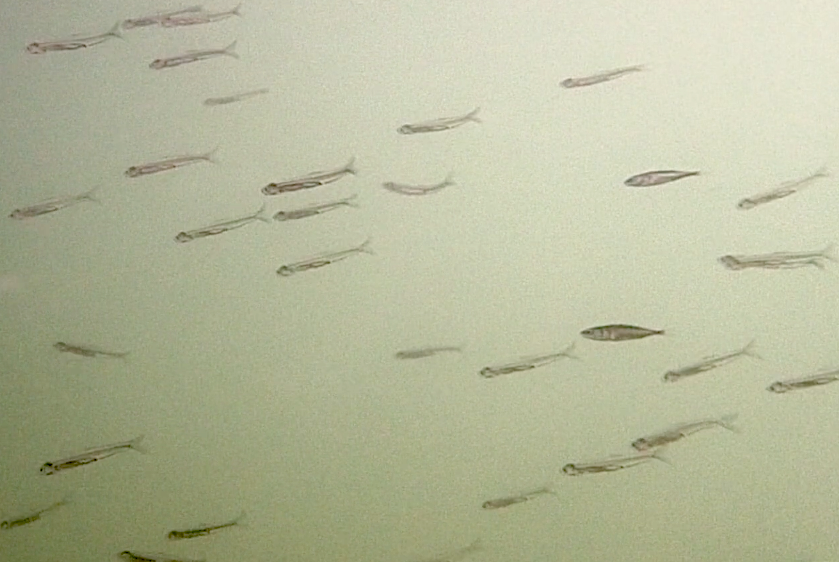The Vancouver Aquarium’s Vice President of Marine Science, Dr. Jeff Marliave, says he’s not surprised that sightings of anchovies are being reported in Howe Sound, but the numbers and their presence throughout the Sound is definitely something new.
“I’ve been working in Howe Sound for more than a quarter century and we’ve always had anchovies,” says Marliave. “Now there are millions and millions of them and they are pervasive across the southern reach of Howe Sound. When we saw them before we saw them in Horseshoe Bay. Now we’re seeing them as far as Gibsons.”
Marliave says that the activities of citizen scientists, often equipped with underwater cameras may account for range and frequency of sightings.
One such citizen scientist described an encounter, while swimming in Eagle Harbour, to the Department of Fisheries and Ocean’s Rob Bell-Irving.
“There were thousands and thousands of small, slender fish with forked tails, a sort of transparent grey, but darker around the eyes, guts and tails…”
Bell-Irving connected with Bob Turner, who had been in conversation with him about anchovies in local water.
Turner says that he has spotted anchovies in their larval stage on swims in Mannion Bay, Cates Bay, Tunstall Bay and near Mount Gardner dock.
“Given that I have seen them on four separate swims at four different locations on Bowen, I think it is safe to say they are all around the island,” says Turner. “Given they’ve been spotted in Gibsons, Horseshoe Bay, and now False Creek, I think that we can pretty safely say that is what was spotted in Eagle Harbour as well.”
Turner says that when the fish are still transparent, they are considered to be in their larval stage.
“This makes them fairly hard to see unless you are actually in the water,” he adds.
Marliave says he credits what is being called the great “Howe Sound Recovery” to two back-to-back El Niña years that allowed the cold-loving herring to flourish. He says the anchovies have thrived because of last year’s El Niña.
“Short term climate shifts are normal,” says Marliave. “We are much more aware of them these days. If we see these shifts as persistent, back to back La Niñas or El Niños over several years, that can be considered a ‘regime shift.’”
Marliave says it remains to be seen how long the anchovies will persist in Howe Sound as temperatures go “back to normal” and that things may shift if we may see another cold water La Niña period.
“Keep in mind,” Marliave said in a recent email to Bob Turner, “Through all this talk of terrific recoveries. The rockfish have been losers over the last half decade; not many juveniles settling in Howe Sound. There are always winners and losers.”



